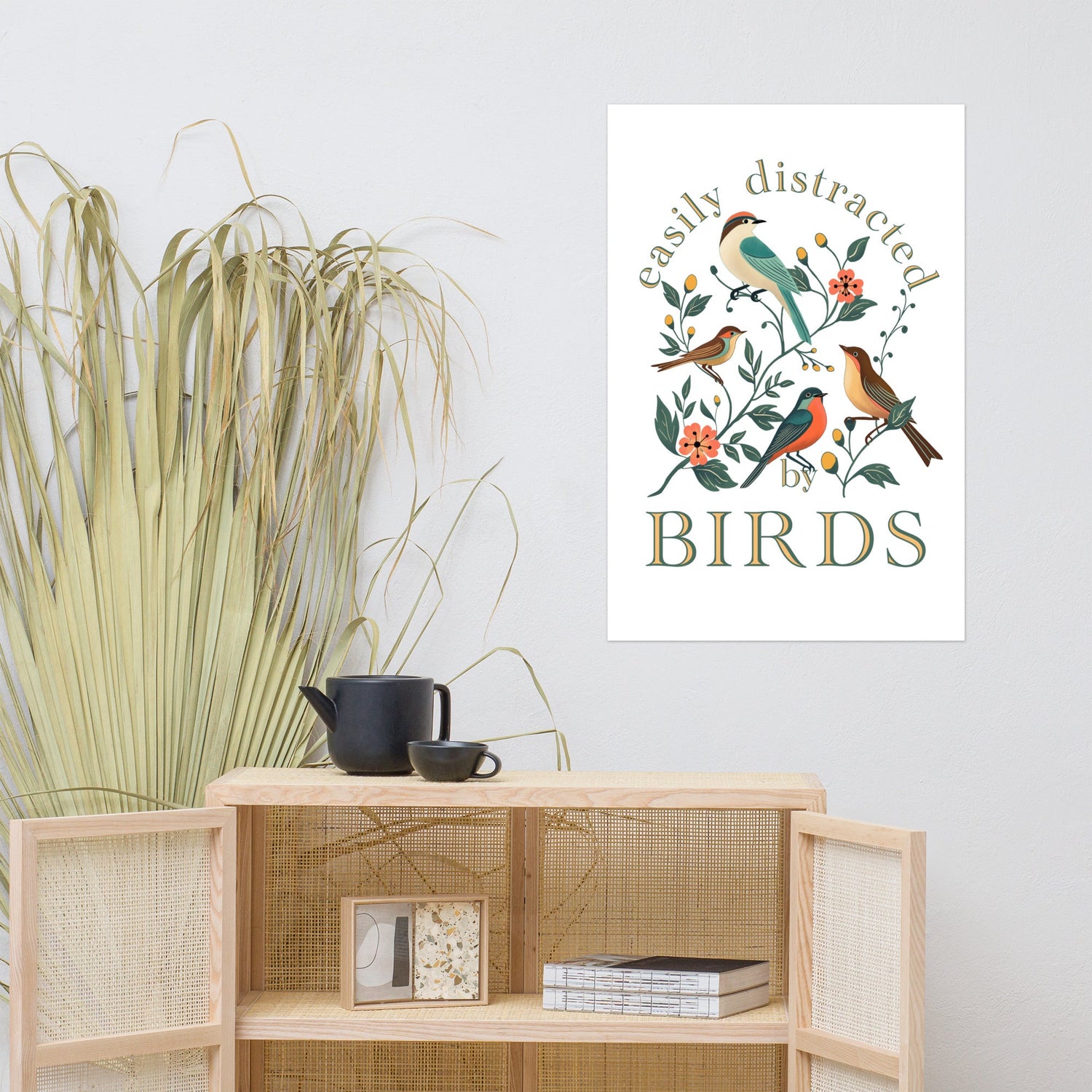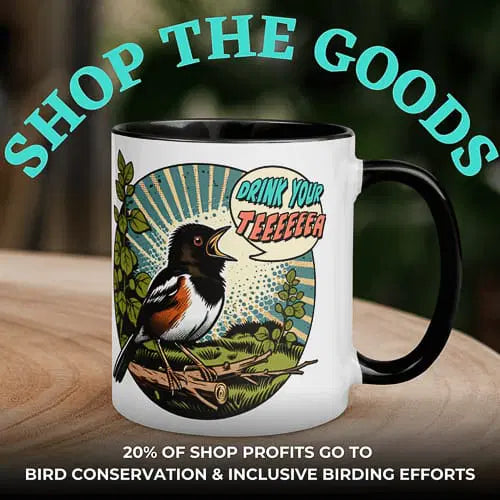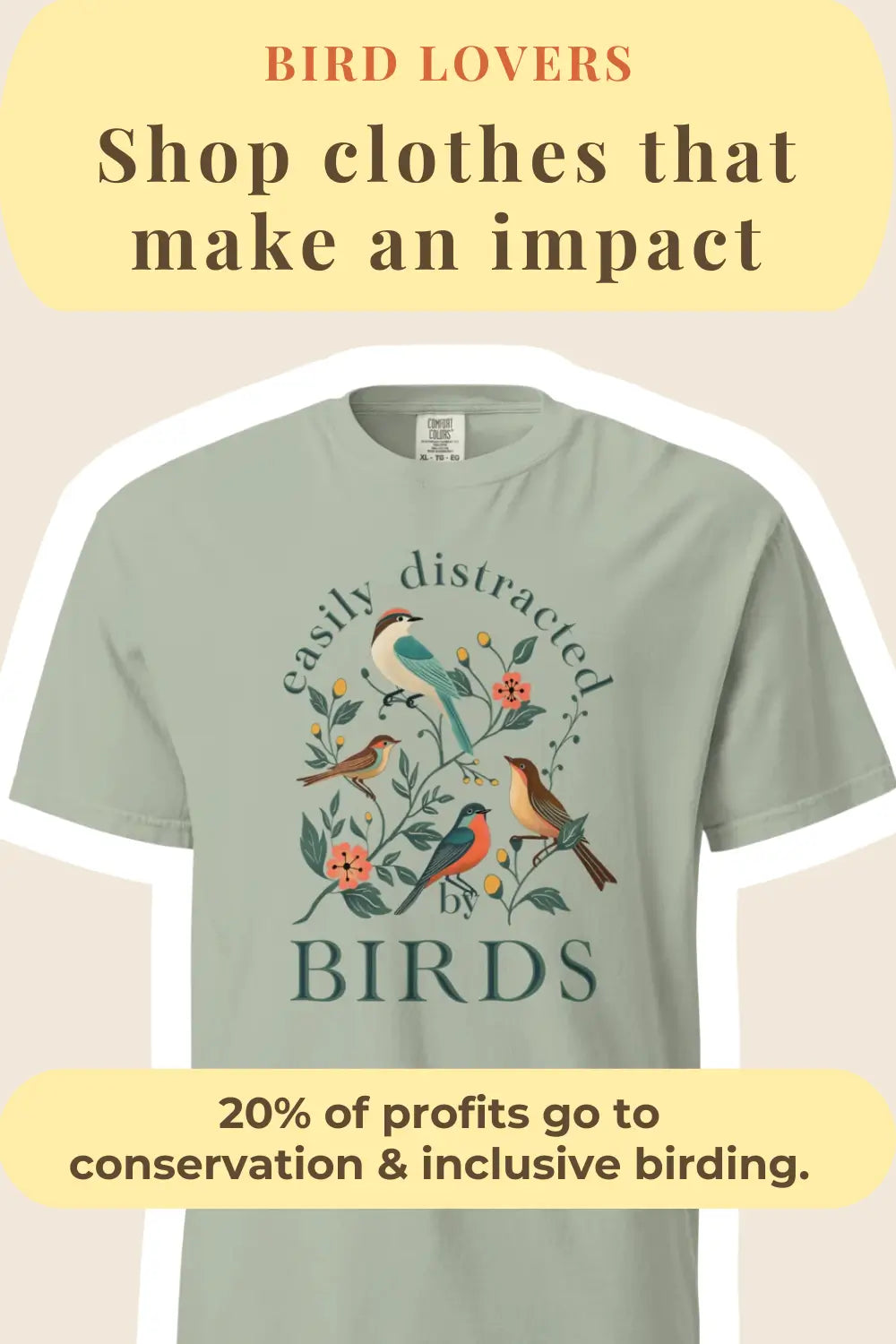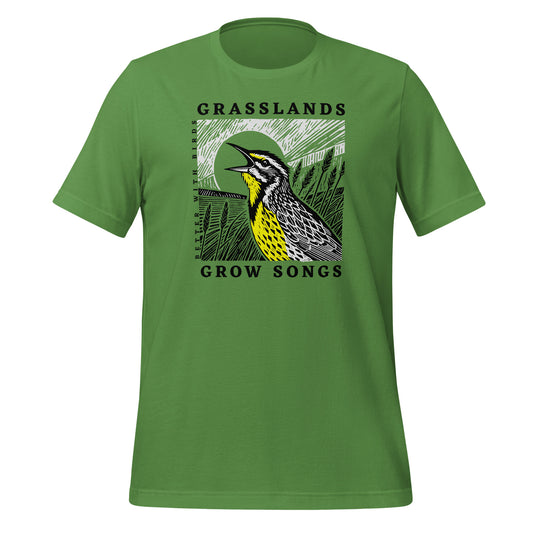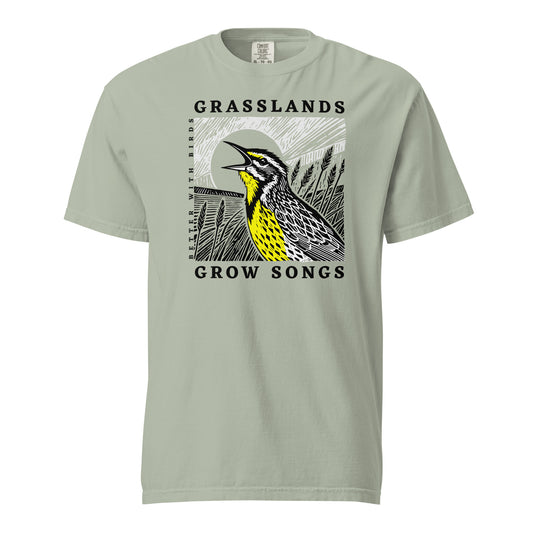8 Easy Tips on How to Identify Birds
Photos by Jaymi Heimbuch
Read Time: 7 minutes
Bird Identification , Tips & Advice
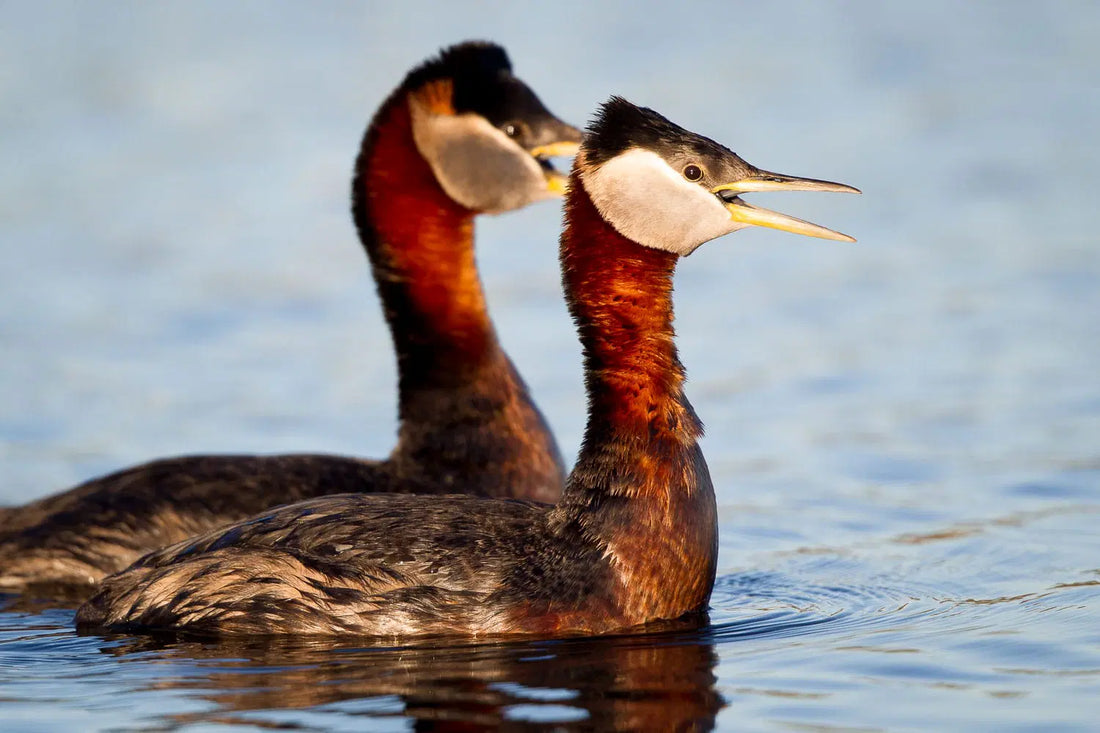
This post contains affiliate links. If you use these links to buy something, we may earn a commission at no additional cost to you. We only recommend products we fully support or use ourselves. Our full disclaimer
PIN THIS FOR LATER
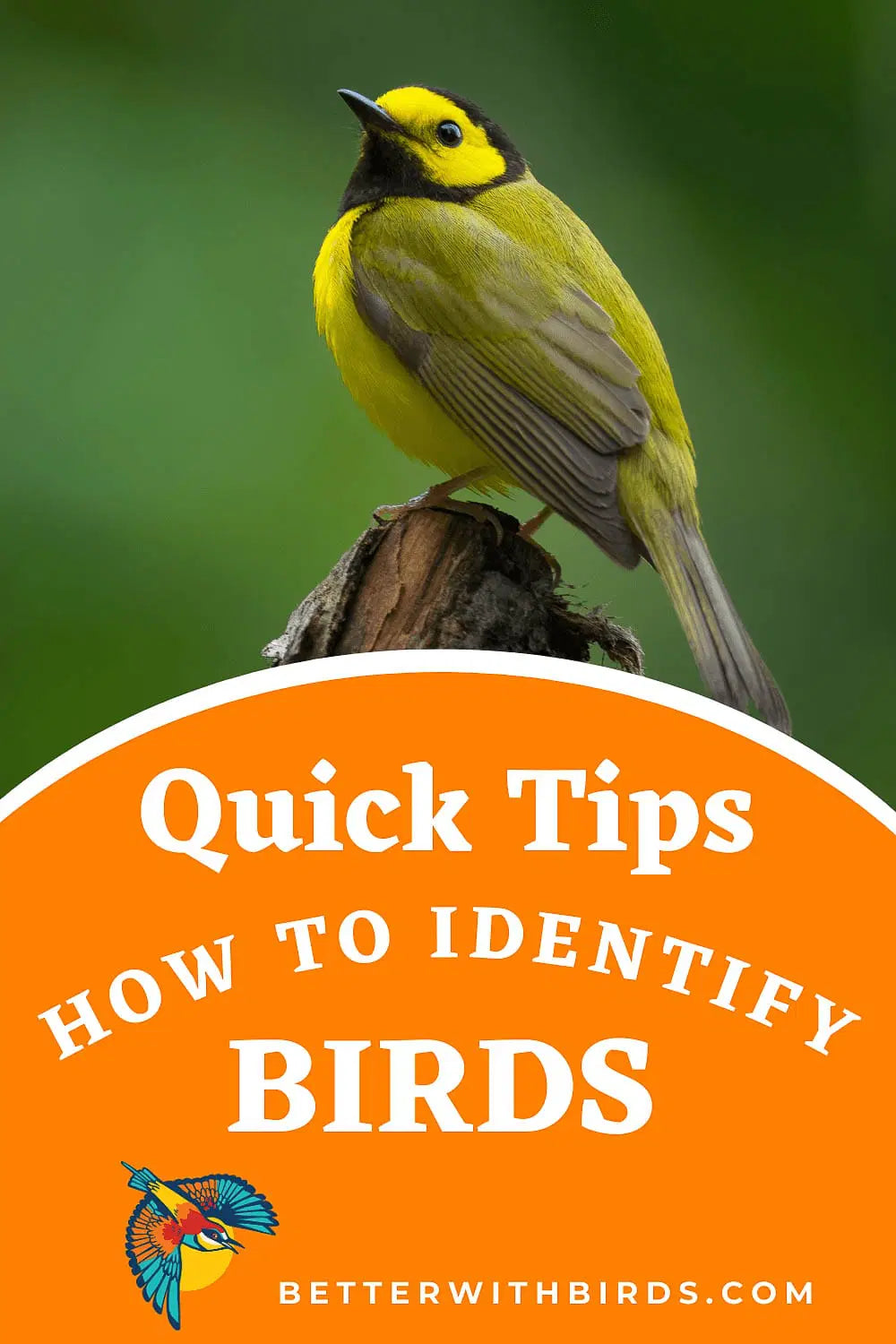
Contents
Curious about the birds you spot in your daily life but not sure how to identify them?
This guide is your quick-start introduction to bird identification for beginners.
We’re keeping it simple—no technical jargon, just clear-cut advice to help you start recognizing and naming birds like a seasoned birder.
After you run through these tips, we recommend you hop over to our tutorial on reading field guides, which is the next step in being a total pro at bird ID.
Getting started with bird identification
The art of bird identification begins with cultivating patience—a virtue that allows you to discern subtle differences between bird species and delight in their unique behaviors. Whether you’re trying to distinguish a certain sparrow species from all the “Little Brown Jobs” out there, or unravel the mystery of an unfamiliar bird’s winter plumage, keen observation is your most trusted tool.
Find a comfortable spot, engage your senses, and allow the birds to reveal themselves to you.
Thanks to the digital revolution, birding has become incredibly accessible. To start, you only need a pair of binoculars, a field guide or two, and a helpful app are your best allies in this journey.
Recommended tools for birding are:
🐦⬛ A trusty pair of binoculars (they don’t have to be fancy or expensive!)
🐦⬛ The Merlin Bird ID app, which can turn a snapshot of a mystery bird into a revelation
🐦⬛ Field guides, which provide detailed information and illustrations of different bird species
As you begin, remember: every birder started as a novice, and every now-expert was once baffled by a bird’s plumage, even when encountering a mountain bluebird for the first time.
So, just know you’re in good company and enjoy the learning journey. Onward to the tips!

The easiest starting point for a bird identification is shape. Is it shaped like a sparrow? A hawk? A duck? Is it a round-ish duck? A sleek-ish duck? That shape alone gets you far. (Hooded merganser)
1. Recognizing Bird Shapes
Waltz through your field guide, and you’ll notice that each bird species has a distinctive silhouette—a telltale shape that can narrow your search significantly.
Whether it’s the streamlined figure of a heron or the robust form of a duck, learning these outlines is like recognizing the faces of friends in a crowd.
And when a photo doesn’t quite capture the essence, remember, a bird’s shape in flight often reveals more than any still image can.
Examine the head, wings, and tail closely; these features are crucial for identifying a bird.
Does the bill point sharply like a spear, hinting at a life spent diving for fish, or is it short and stout, perfect for cracking seeds?
Observe how a sparrow’s wings differ from a hawk’s, and you’ll start to distinguish not just between species but between entire families of birds.


After narrowing down shape, size is a big help. If it’s duck-like. Is it a really big duck? An eeny-weeny duck? Use sizes you’re familiar with to compare – such as “robin size” or “chicken size”. (Harlequin duck)
2. Comparing Bird Sizes
Imagine an unfamiliar bird perched beside a familiar object—a fence post or a tree branch.
This simple visual trick can provide a valuable point of reference to gauge the bird’s size and set you on the right path to identification.
It’s a bit like playing a game of ‘which one of these is not like the others,’ comparing the mystery bird to common birds you already recognize, such as sparrows or crows.
This method can be particularly handy when two species, or similar species, are spotted together, offering a direct comparison.
Keep in mind that appearances may be misleading. Variations in distance and minor size differences within species groups can confuse your perceptions.
So while size matters, it’s just one piece of the puzzle, to be considered along with other traits like shape and plumage.

Wing shape is a wonderful indicator or species – such as separating these terns – which have quite sharp, angular wings – from similar seabird species with perhaps more rounded or straight wing shapes.
3. Recognizing bird flight patterns and wing shape
Consider flight as a unique dance, with each bird species performing its own specific movements.
Some, like the woodpecker, rise and fall in a gentle undulation, while others, such as ducks, beat their wings in a frantic rhythm.
And then there’s the turkey vulture, whose wobbly, soaring glide is as distinctive as its silhouette against the sky.
Observing these patterns can provide a wealth of information, guiding your identification efforts with precision.
Wing shape is equally telling; the wide, stable span of a hawk in flight contrasts sharply with the angular wings of gulls.
This aspect of birding requires some practice, but once you learn to recognize the various wing shapes and flight styles, you’ll be able to identify birds with a mere glance at the sky.

What’s that bird doing? Behaviors are a fantastic clue to species. This North Island saddleback (tīeke) is grabbing a moth from a log – which tells us it eats insects and will forage low in the tree canopy. When you’re narrowing down species, these behaviors can filter out look-alikes.
4. Observing Bird Behavior
Birds exhibit habitual behaviors, which can offer significant insights. Some common behaviors to observe include:
- Food preferences
- Flocking behavior
- Style of calling
- Feeding habits (e.g. darting after insects or sifting through leaf litter)
By tuning into behaviors, you can often narrow down the list of possible species before even considering their physical characteristics. Start by watching what birds are doing—are they foraging on the ground, darting through the air after insects, or meticulously picking berries from a bush?
Social behaviors are equally revealing: some birds, like starlings, are often seen in large, noisy flocks, while others, such as the solitary heron, prefer to fish alone.
Mating displays, territorial disputes, and even the way birds interact with others can provide valuable insights.
Keep a notebook handy to jot down these observations. Over time, patterns will emerge, making future identifications easier and more intuitive.

An American dipper could look like many other little brown jobs, especially from a distance. But factor in its habitat – rushing streams and rivers – and it becomes incredibly unique and easy to identify.
5. Noting Habitat Types
The environment where you spot a bird can provide as much information as the bird’s physical characteristics.
Habitats are like nature’s address system, with each environment supporting its own cast of avian characters. From the dense foliage of woodlands to the open skies above scrub-shrub landscapes, each habitat type is a different stage for birdlife, with species that have adapted to thrive there.
Understanding these habitats is not just about the backdrop; it’s about recognizing the bird’s role within that environment.
Aquatic birds, for instance, have evolved to navigate water, while those in open areas may be adapted for long-distance flight.
By noting the habitat, you can narrow down your list of potential species and avoid mistaking a woodland-dweller for its open-area cousin.


Many species groups can be tough to figure out – like shorebirds. So, paying close attention to color patterns and markings goes a long way toward identifying this snowy plover apart from similar-looking peeps.
6. Deciphering Color Patterns and Plumage
Color patterns and plumage can be some of the most striking features of a bird, but they can also be tricky to interpret.
Lighting, distance, and even the bird’s age or sex can affect how colors appear.
Instead of focusing on a single color, take note of the overall color scheme and any distinctive markings.
Look for patterns: stripes, spots, bars, and patches are all helpful identifiers.
For example, the bold black and white pattern of a Downy Woodpecker is hard to miss, while the subtle color variations in a female House Finch require a keener eye.
It’s also important to remember that plumage can change with the seasons. Many birds molt, and their non-breeding plumage can look drastically different from their breeding attire.
Practice noticing specific field marks like:
- Wing Bars: Look for distinct stripes or bars across the wings.
- Eye Rings: Notice any circles of color around the eyes.
- Tail Patterns: Observe the color and pattern of the tail feathers.
- Bill Color: Note the size, shape, and color of the bill.
- Leg Color: Pay attention to the color of the bird’s legs and feet.
- Crown Markings: Check for distinctive colors or patterns on the head or crown.
- Breast Patterns: Look for streaks, spots, or solid colors on the breast.
- Rump and Under-tail Coverts: Observe the color and pattern of the rump and the area under the tail.
- Overall Coloration: Consider the general color scheme and any unique color patches.
Which species is that? Telling two apart can be as easy as thinking about where you are in the world. For instance, this horned puffin is a Pacific species, so we instantly know it isn’t an Atlantic puffin!
7. Location and Elevation Factors
Birdwatching is impacted not just by immediate surroundings, but also by the wider region and its elevation.
A bird’s plumage may seem like an open book, yet without considering the region and elevation, you may misinterpret who it actually is.
For instance, two species with similar appearances might inhabit different altitudes, and only one may be common to your area.
This is where range maps come into play, offering a bird’s-eye view of species distribution. They serve as geographical field guides, confirming that the bird you’re observing is, indeed, a local resident and not just passing through.
These tools, along with field marks, are invaluable for birders who want to ensure their identifications are grounded in reality.

Uhhh… is that more duck like or chicken like? If you get stuck on something – like seeing your first American coot – just whip out your smart phone and tap into an ID app for help.
8. Utilizing Technology for Bird Identification
As technology permeates all aspects of our existence, birding has also reaped the benefits of this digital age.
Apps like Merlin Bird ID have transformed birdwatching, making identification as simple as snapping a photo or recording a song.
These pocket-sized guides offer a treasure trove of information, from detailed images to real-time song identification, making them indispensable tools for birders at all levels.
Each app comes with its own set of bells and whistles.
Whether it’s Audubon Birds’ comprehensive range maps, iBird Pro’s intricate comparison tools, or eBird Mobile’s latest sighting information, these digital field guides are designed to enhance your birding experience.
With features like advanced search functions and species verification recordings, they help you identify birds with confidence and precision.
Learn about more apps and handy tools in this guide on getting started in bird watching.

Marsh wren, check! A wonderful motivator for studying bird ID and getting past sticking points is keeping a bird list. The more you can ID species around you, the more you build that list!
Bonus: Building Your Life List
A life list isn’t simply a count of sightings; it’s a narrative of your birding adventures. Every bird spotted and identified adds a line to the story of your explorations, creating a personal narrative that extends beyond mere numbers.
These lists foster a sense of community among birders, offering a platform to share experiences and celebrate each new ‘lifer’ added to the record.
But maintaining a life list isn’t just about keeping score. It’s about the details—the date, time, location, and any unique traits observed. This information enriches your list, turning it into a resource for reflection and learning.
And while some may debate the taxonomy or compete over list lengths, it’s the shared passion for birding that truly unites the community.
Final Thoughts
As we wrap up, remember that every birdwatching outing is genuinely a step toward becoming a more skilled birder – even just a 10 minute walk noticing species you see every day. From instantly recognizing shapes and sizes to understanding behaviors and habitats, each piece of knowledge builds on the last.
Armed with patience, keen observation skills, and the latest technology, you’ll soon find that identifying birds becomes second nature. Keep your binoculars handy, your field guide close, and your curiosity alive.
Happy birding!
